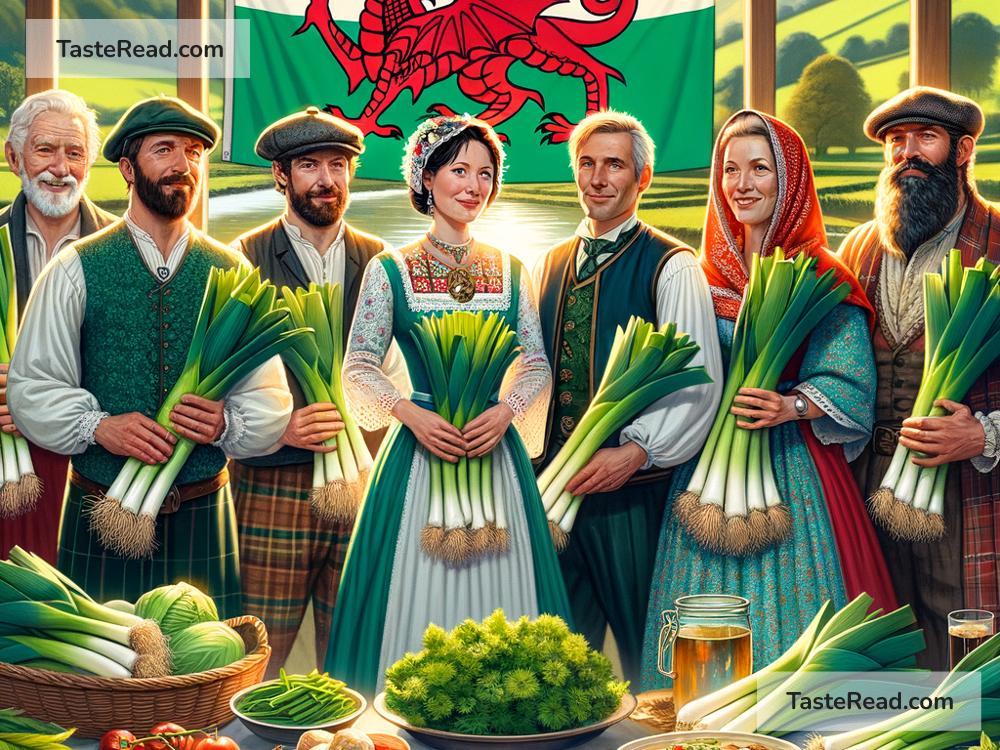The Curious Symbolism of Leeks in Welsh Culture
When most people think of traditional symbols, they might picture iconic animals, treasured monuments, or beautiful flowers. But in Wales, one of the most significant symbols is surprisingly humble: a leek. Yes, this long, green vegetable has been a cherished emblem of Welsh identity for centuries. How did the leek become so important in Welsh culture? Let’s take a closer look at its curious symbolism and what it represents.
A History Rooted in Legend
The connection between Wales and leeks has deep historical and mythical roots. One of the most popular stories traces the leek’s significance back to a battle in the 7th century. According to legend, the King of Gwynedd, Cadwaladr, led Welsh soldiers into battle against invading Saxons. To distinguish themselves from their enemies, the Welsh troops wore leeks on their helmets. The vegetable became a symbol of pride and unity, and, according to the tale, they claimed victory in part because of its helpful identification in the chaotic fight.
Whether this story is entirely true or part of Welsh folklore, it demonstrates how the leek came to be associated with bravery, loyalty, and Welsh patriotism.
The Leek on St. David’s Day
Today, the leek is most prominently linked with St. David’s Day, celebrated on March 1st. St. David, the patron saint of Wales, is a figure of spiritual significance who inspired people with his teachings and humble way of life.
On this special day, many Welsh people wear symbols of their heritage to honor their culture and history. Some wear daffodils, another national emblem, which is also associated with the arrival of spring. But others opt for a leek, proudly pinning the vegetable—or a small badge featuring its image—to their clothing.
This tradition is not confined to Wales alone; Welsh soldiers in the British Army historically wore leeks during formal ceremonies on St. David’s Day to show their allegiance to their home country.
Leeks in Welsh Poetry and Literature
The leek’s status as a national symbol is evident in Welsh poetry and literature. During the Middle Ages, poets and writers often referenced it in their works as a metaphor for Welsh identity and resilience.
In Shakespeare’s play Henry V, the leek is famously used to symbolize Welsh pride. When the character Fluellen, a Welsh captain, wears a leek in his hat during battle, he defends the tradition with passion and humor. He tells another soldier who mocks him that the leek is “an ancient tradition as noted in Wales.” Shakespeare’s words captured how such a simple vegetable could represent something much greater.
This enduring symbolism proves that the leek is not just a food item—it’s a powerful reminder of Wales’ rich heritage, history, and sense of community.
Symbol of Simplicity and Humility
One reason the leek resonates with Welsh culture is its simplicity. Unlike grand symbols like lions or towering mountains, the leek is modest and earthy, much like the values that many associate with Wales itself. It grows steadily, offers nourishment, and requires care to cultivate—characteristics that reflect the hardworking spirit and down-to-earth nature of the Welsh people.
The leek also symbolizes humility, a characteristic often linked with St. David, whose teachings emphasized kindness and simplicity. Choosing such an unassuming vegetable as a national emblem demonstrates Wales’ ability to find beauty and meaning in everyday things.
Leeks in Welsh Cuisine
Beyond its symbolic significance, the leek is also a beloved ingredient in Welsh cooking. It’s versatile, nutritious, and flavorful, making it ideal for traditional dishes.
One popular recipe is cawl, a hearty Welsh soup traditionally made with vegetables, meat, and broth. Leeks add warmth and depth to the dish, embodying the comforting qualities of home cooking. The vegetable also appears in savory pies, stews, and even modern recipes that celebrate local Welsh flavors.
Welsh chefs and home cooks alike cherish the leek not just for its symbolism but for its practical role in the kitchen.
A Worldwide Symbol of Wales
The leek has become a global symbol representing Wales and its people. Welsh sports teams, including the national football and rugby teams, often incorporate leeks into their badges and logos. The vegetable is worn proudly in competitions and ceremonies, reminding everyone of their roots.
Even the Welsh Guards, a regiment in the British Army, maintain the tradition of celebrating leeks. Their regimental mascot is a goat named Shenkin, who often appears alongside a soldier carrying a ceremonial leek during parades.
Conclusion
The leek is far more than just a vegetable in Wales—it’s a symbol packed with historical, cultural, and emotional significance. Through legends of bravery, humble values, and enduring traditions, it represents the pride, resilience, and unity of the Welsh people.
On St. David’s Day and beyond, the leek’s presence serves as a reminder of Wales’ unique heritage and the strength of its community. So the next time you see a leek, think of it not just as an ingredient for dinner, but as a symbol of a nation’s history and spirit—a vegetable with a story to tell.


